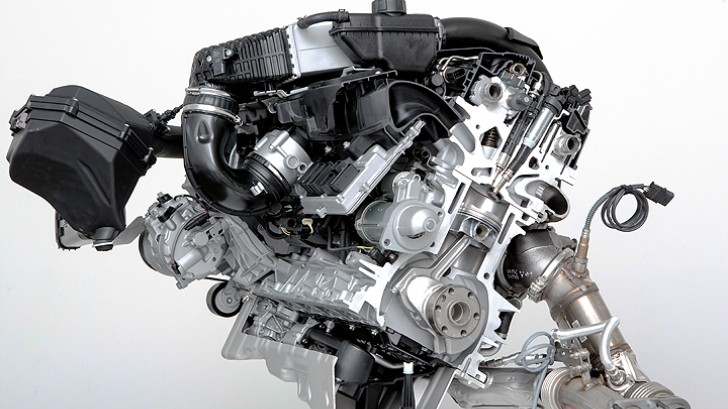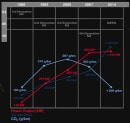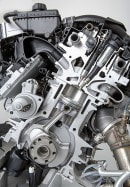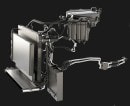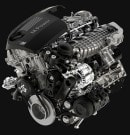Since BMW's M division decided to go down the turbocharged road for the first time in the M3's history, the world was waiting anxiously to see what they came up with. This is the lucky week when we finally get some official response.
The 2015 BMW F80 M3 returns to the inline 6-cylinder configuration and, despite having 2 turbochargers, it revs up to over 7,500 RPM, therefore combining the best of two worlds. In one of their press releases, the M division even published a chart showing the differences between various M3 engines along the years (you can check it out in the gallery).
As you can see, starting with 2000, the focus of the German company was to deliver greater efficiency and more power whilst also keeping CO2 emissions is check. If in 2000 the E46 M3 released 287 grams of CO2 into the atmosphere for every 100 kilometers, in 2014, the new M3 and M4 models will get by with less than 200 grams.
That doesn't mean that the engine will lack power in any way. Actually, it will be stronger than the previous V8, creating around 430 HP and more than 500 Nm (370 lb-ft) of torque, an increase of well over 30% as BMW claims.
Furthermore, the engine will be EU6 compliant and will be 25 percent more efficient, thanks to VALVETRONIC and Double-VANOS technology, therefore avoiding usage of cylinder deactivation.
Even the crankcase and crankshaft designs were improved, the new engine having a closed-deck crankcase design with increased rigidity that allows cylinder pressures to be increased for more power.
Since there will be two TwinPower turbochargers installed on the cylinder bank, the cooling system has to be more than good. In this regard, to ensure optimal operating temperatures, the M3 and M4 will have a main radiator plus a couple of additional radiators for the high- and low-temperature circuits, turbocharger and transmission.
One final innovation is the oil supply system. BMW M decided to use a low-weight magnesium oil sump that features a special cover that makes sure the oil pressure is optimal in all conditions, including under the effects of strong dynamic lateral acceleration.
As you can see, starting with 2000, the focus of the German company was to deliver greater efficiency and more power whilst also keeping CO2 emissions is check. If in 2000 the E46 M3 released 287 grams of CO2 into the atmosphere for every 100 kilometers, in 2014, the new M3 and M4 models will get by with less than 200 grams.
That doesn't mean that the engine will lack power in any way. Actually, it will be stronger than the previous V8, creating around 430 HP and more than 500 Nm (370 lb-ft) of torque, an increase of well over 30% as BMW claims.
Furthermore, the engine will be EU6 compliant and will be 25 percent more efficient, thanks to VALVETRONIC and Double-VANOS technology, therefore avoiding usage of cylinder deactivation.
Even the crankcase and crankshaft designs were improved, the new engine having a closed-deck crankcase design with increased rigidity that allows cylinder pressures to be increased for more power.
Since there will be two TwinPower turbochargers installed on the cylinder bank, the cooling system has to be more than good. In this regard, to ensure optimal operating temperatures, the M3 and M4 will have a main radiator plus a couple of additional radiators for the high- and low-temperature circuits, turbocharger and transmission.
One final innovation is the oil supply system. BMW M decided to use a low-weight magnesium oil sump that features a special cover that makes sure the oil pressure is optimal in all conditions, including under the effects of strong dynamic lateral acceleration.
